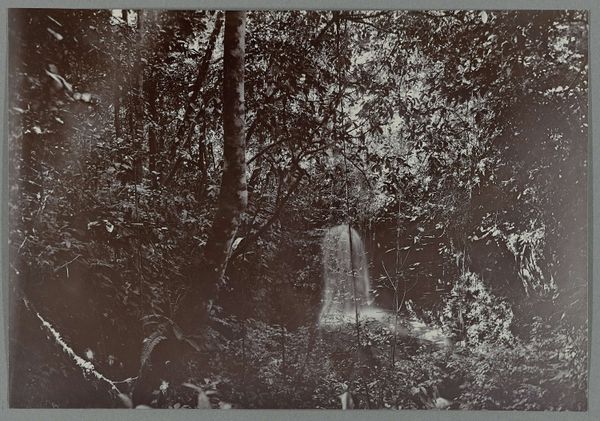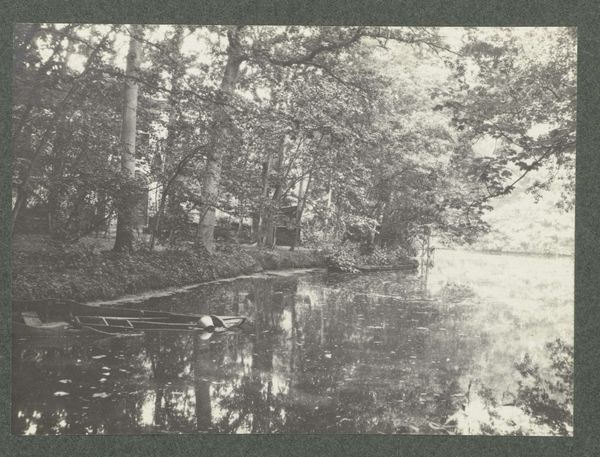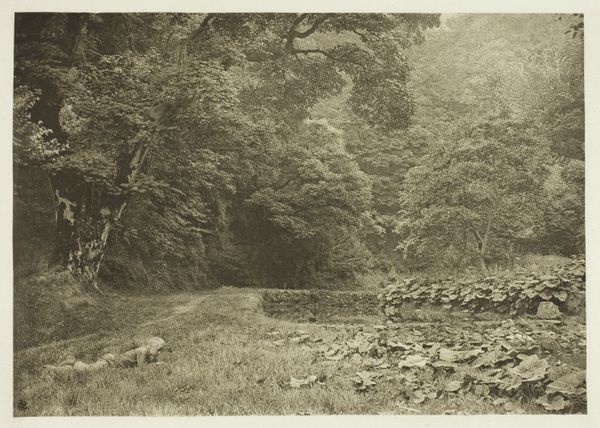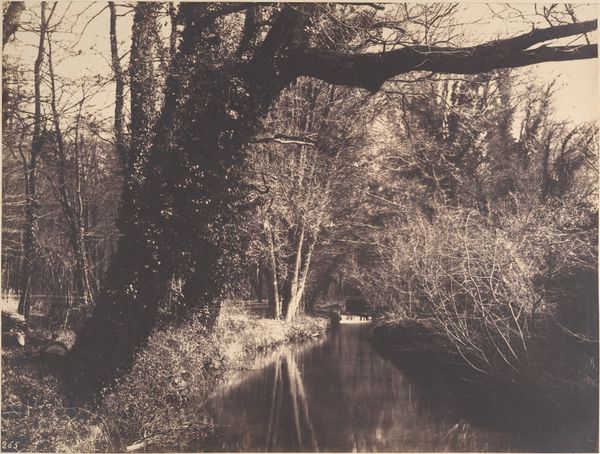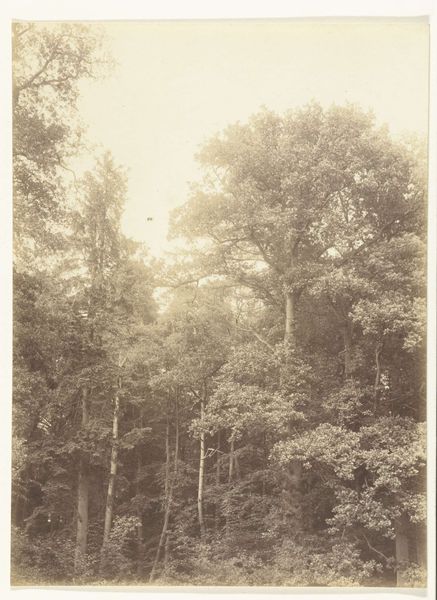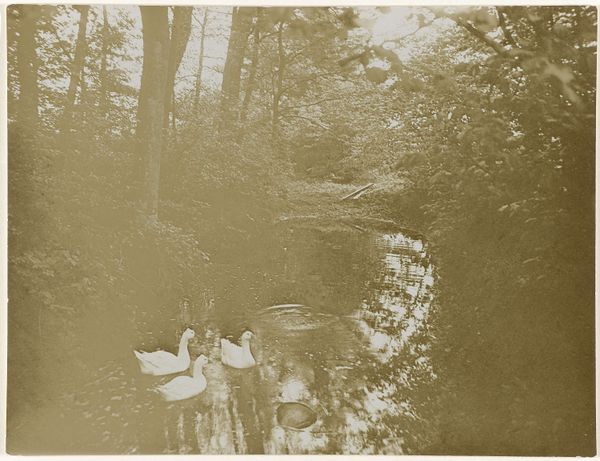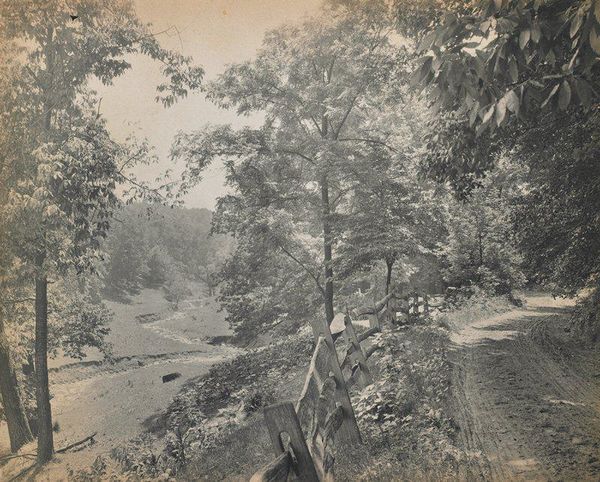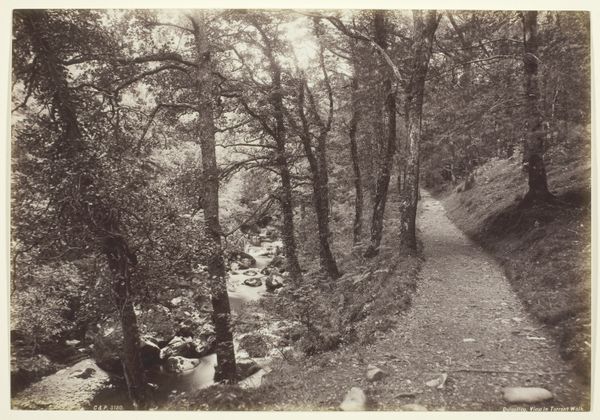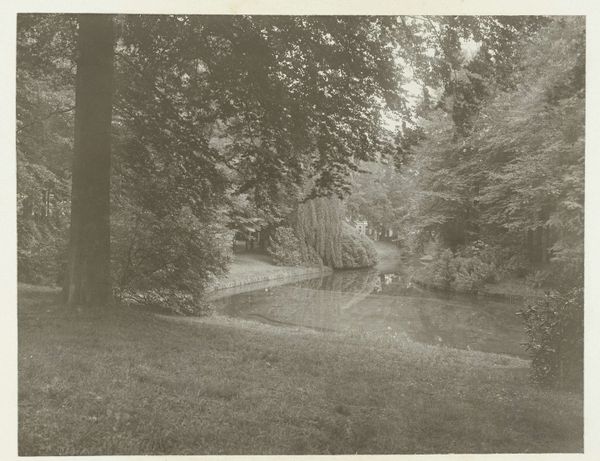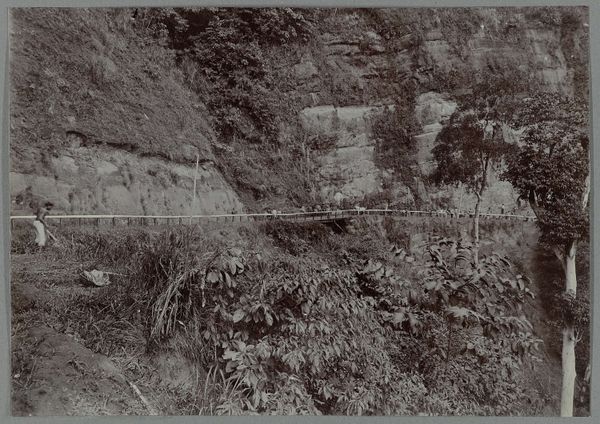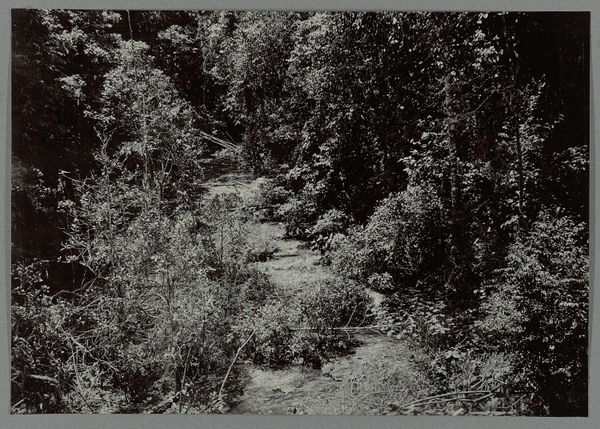
Copyright: Public Domain
Editor: We're looking at Francis Bedford's "Colwyn Bay. The Pool in the Wood," taken sometime in the 1870s. It's a photograph, of course, and what strikes me most is the density of the composition. It's almost claustrophobic, yet the water offers this small sense of calm. What compositional elements stand out to you? Curator: The tonal range is indeed fascinating. Observe how Bedford manipulates light and shadow. The intense contrast across the surfaces of the water and foliage, achieved through chemical processing and controlled exposure, highlights a rigorous focus on texture. Editor: The detail is impressive given the time. It almost looks like a painting! Curator: Precisely. Bedford meticulously composes a natural tableau. Note the formal arrangement. The pond acts as a reflecting mirror but the light does not bounce well. The surface is dark; we do not even perceive a figure near the water. Is this manipulation designed to draw out a feeling of uncertainty, rather than reveal a landscape’s beauty? Editor: I hadn't thought of it like that, but I think it does. I wonder, if the pool was less dominant would the eye be led through to the break in the background to appreciate that form further, or even be lead back to the pool as an anchor point of familiarity in an image with very few straight lines. Curator: Such questions are at the crux of understanding photography. Consider also the texture's overall impact. Is the goal only mimesis, or does it signify something more profound about the late Victorian gaze and relationship to the natural world? Editor: Seeing the technical control that was involved, even back then, gives me a new appreciation for photography as art. Thanks for pointing out what the textures say about intent and time.
Comments
No comments
Be the first to comment and join the conversation on the ultimate creative platform.
